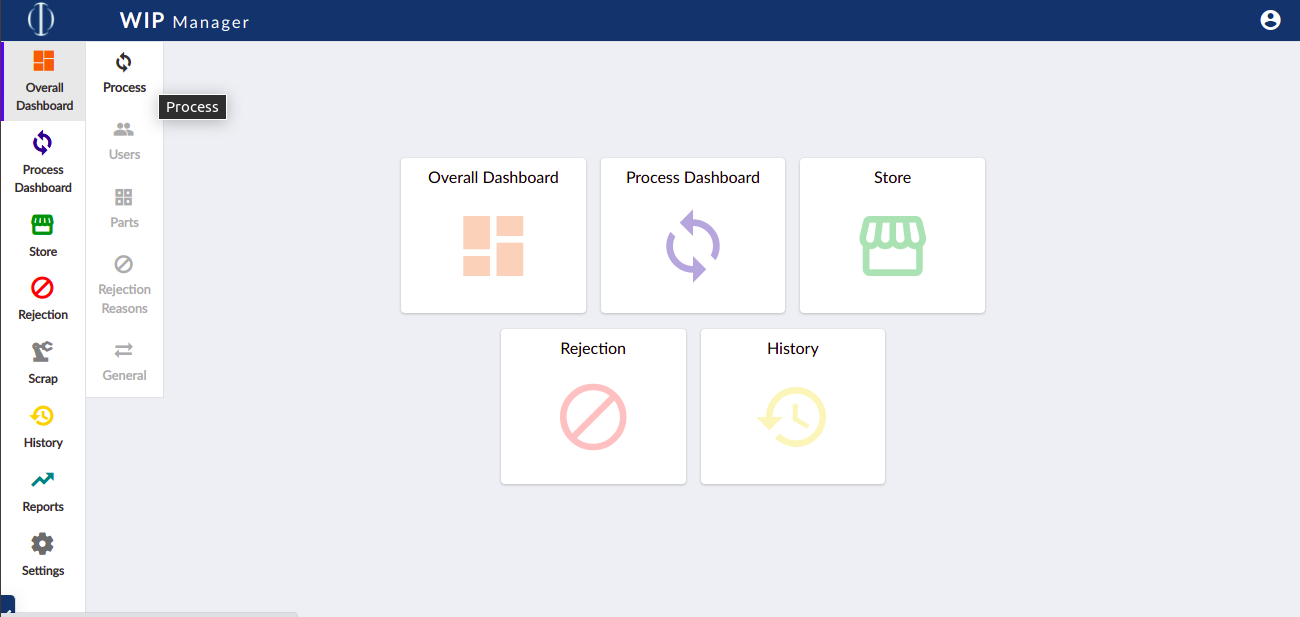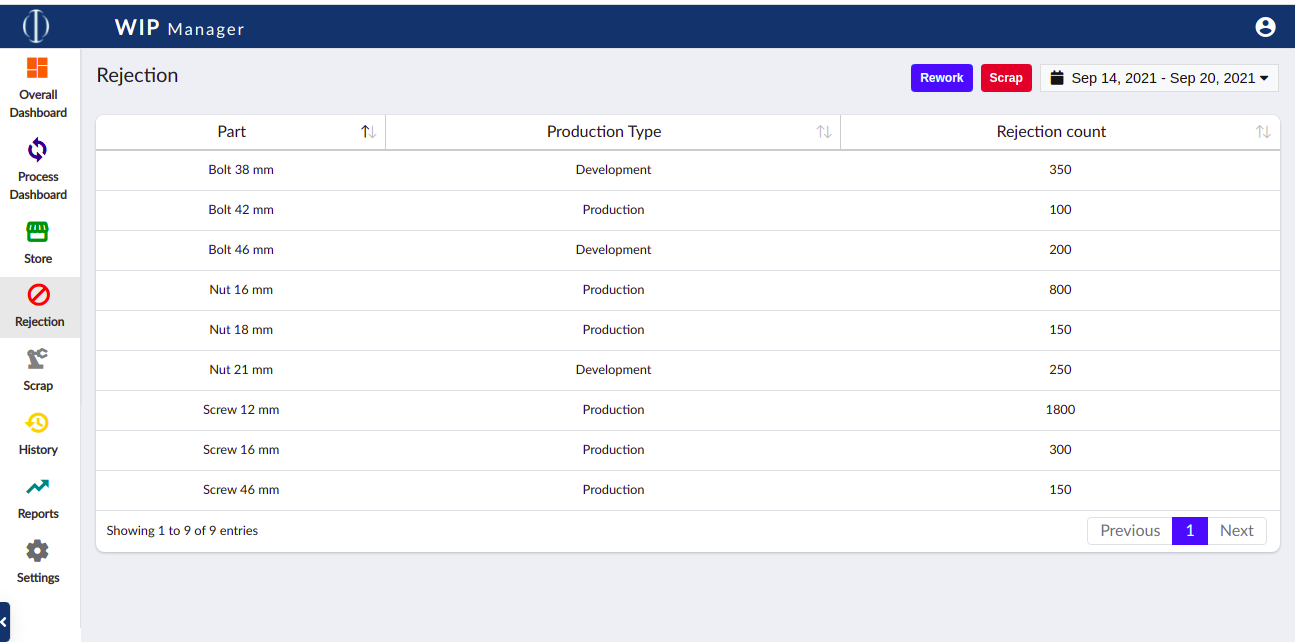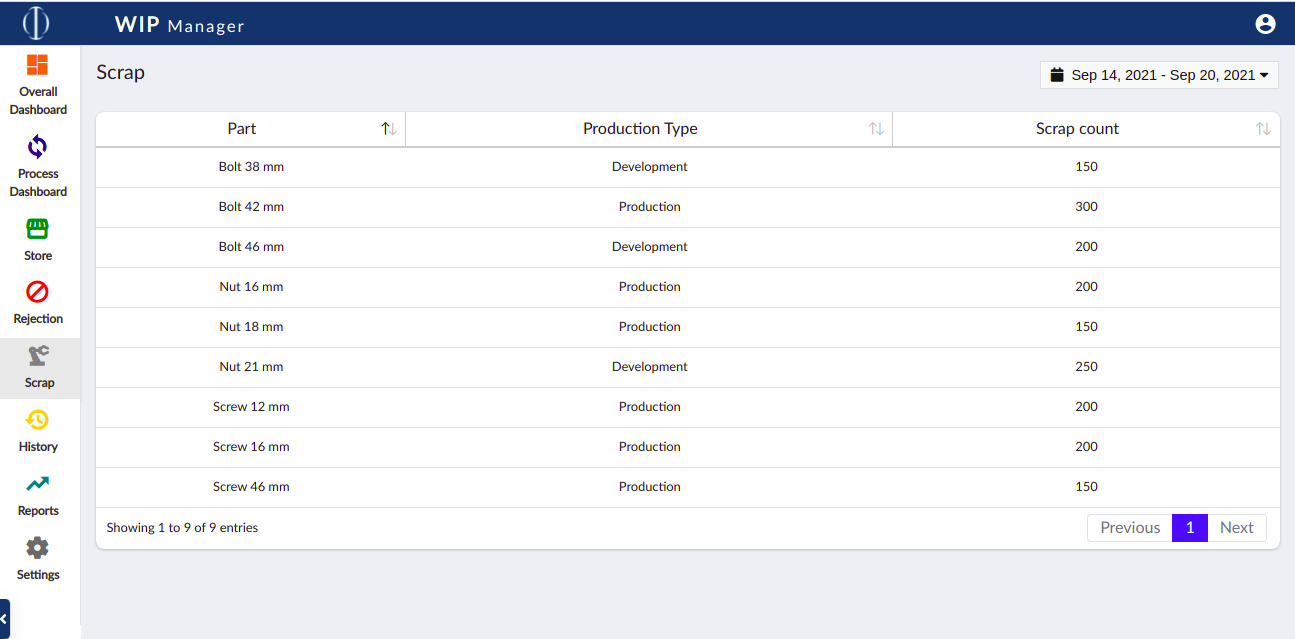by Hema | Sep 21, 2021 | WIP, Industry4.0 | 0 comments

A decade ago, I was working in a garment factory where every data is manually entered using paper sheets. There is no proper track of data especially the materials in, out and WIP and there is a high risk and possibility of manipulating the original data. Even today I could witness many manufacturing industries are still using XL sheets to record data. Keeping no track of yesterday and today data, how it is possible to improve productivity?. Keep a full stop to it and digitize your WIP so that you can keep track of all events from start to end. As a part of our Industry 4.0 solution , we are now introducing a WIP manager, fully digitized 100% foolproof WIP tool where in you can easily manage and keep track of your ‘work in progress’. You can get a clear picture of what is happening on your shop floor on a daily basis.
WIP manager offers everything you need to manage, enter & take count on the WIP flow and WIP units. The inventories which still requires work, assembly, inspection, or processing before they’re completed can be tracked to know the right numbers and set strict limits.
Here is how you can be benefited with WIP Manager.
For each production process, the target must be set for the amount of WIP required. It must be agreeable to undergo smooth production work flow providing enough time to resolve production issues before WIP shortages occur. Also, the presence of unnecessary work in progress results in unreliable supply chain, requirement of excessive manual work finally resulting in unnecessary delay and increased WIP in inventory. To avoid all these hurdles and pursue efficient WIP flow, WIP manager will allow production managers to only pull inventory / materials when needed without the need for much WIP. WIP manager will help understand the process at each level to exactly know which process needs material to move forward. It facilitates quick & easy configuration WIP levels by process and part and enable tracking of material movement at each process steps.

The idea of streamlining data is what every manufacturing industry strives to fulfil in efforts to minimize errors and maximize productivity. Regrettably, most industries uses a combination of paper work, spreadsheets and multiple systems which takes much time to address the needs of the shop floor. WIP manager completely eliminates such paper works and allows only few fields to be manually entered by production operators. Operators can easily enter & take a count on WIP materials at each process.
Every manufacturing industry has a unique production process and levels, the raw materials, parts and other materials which differ with each other. Also, the downtime occurs cannot said to be same each time and it varies with process or even with industry. So WIP manager allow operators to predefine the raw materials, parts to be produced and their production processes. It also allows to predefine the expected downtime events and the quality defects to efficiently deal with the downtime & bad quantity issues.

No shop floor is perfect. It is usual that some goods produced can be defective or doesn’t meet quality standard. It is all about how the manufacturing industry handles it. You can often rework defective parts to make them usable. WIP manager provides options for handling or dealing with such defects.
Rejection – Rejections refers to defective which do not meet with dimensional or quality standards but can be reworked for rectification of defects.
Scrap – Scrap is a discarded parts / materials which has no values. And such materials can not be reworked further.
Operators can easily deal with the material losses by moving the defective items either to the rejection or to the scrap.


Kindly reach support if you have any queries.
Please take a moment to fill this form